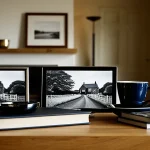Core Cultural Values Shaping Women’s Fashion in Britain
British culture deeply influences women’s fashion through its longstanding cultural values and social norms. These values have historically emphasized modesty, elegance, and adherence to etiquette, which continue to shape dress codes within various contexts. Traditional British values encourage clothing that reflects respectability and refinement, often manifesting in conservative cuts, tailored fits, and understated color palettes.
Social class has played a crucial role in defining style preferences throughout British history. For instance, the upper classes have traditionally favored bespoke tailoring and high-quality materials as markers of status. In contrast, working-class fashion often highlighted practicality and durability. These class-based differences established distinct sartorial codes, contributing to the rich tapestry of British women’s fashion.
In parallel : What Are the Latest Fashion Accessories Trending Among UK Women?
In modern British society, there is a growing appreciation for diversity and evolving gender norms, which challenge previous conventions. Women’s fashion now increasingly embraces fluidity and experimentation, blending masculine and feminine elements. This evolution reflects wider social acceptance and the dynamic nature of cultural values, encouraging individual expression while still honoring traditional influences.
Overall, the interaction between British culture, social norms, and changing gender roles creates a multifaceted fashion landscape. Women’s fashion in Britain is not merely about clothing but serves as a barometer for societal values and transformations.
Have you seen this : What Are the Top Fashion Tips for UK Women in Winter?
The Legacy of British History and Iconic Events
British fashion history is deeply intertwined with landmark heritage events such as Royal Ascot and the Queen’s Garden Party, both of which serve as prestigious platforms where traditional attire and evolving trends intersect. These events uphold strict dress codes, reflecting enduring cultural values and social norms that emphasize elegance and formality. For example, Royal Ascot’s hat culture exemplifies how British culture upholds sartorial rules while allowing expressive styles within those bounds.
Significant historical periods have left an indelible mark on women’s clothing in Britain. The Victorian era introduced highly structured silhouettes and modesty that continue to inspire contemporary designs focusing on tailored fits and poise. The Edwardian period brought softer lines and lighter fabrics, signaling a subtle shift in social norms. Later, the 1960s mod movement challenged prior modesty norms with bold patterns and youthful rebellion, showcasing the dynamic evolution of British cultural values through fashion.
Heritage garments such as tweed, tartan, and trench coats possess a timeless appeal that speaks to Britain’s rich fashion history. These items not only symbolize British craftsmanship but also represent a sustained respect for tradition within women’s fashion. The trench coat, for example, evolved from military origins to a staple of elegant outerwear, illustrating how British culture transforms historic influences into contemporary staples. Overall, British fashion history and heritage events continue to play crucial roles in preserving cultural values while fostering innovation in women’s fashion.
Impact of British Designers and Fashion Houses
British designers have played a pivotal role in defining and advancing women’s fashion trends both locally and internationally. Trailblazers like Vivienne Westwood revolutionized fashion by introducing punk aesthetics that challenged conventional norms, blending rebellion with sartorial artistry. Stella McCartney’s commitment to sustainability and elegant cuts continues to shape modern ethical fashion. Meanwhile, Alexander McQueen’s dramatic and innovative designs fuse traditional British craftsmanship with avant-garde elements, highlighting the country’s dual respect for heritage and creative daring.
London Fashion Week stands as a global stage where British designers present cutting-edge collections that influence fashion worldwide. It showcases a dynamic range of styles—from the edgy to the classic—that reverberate through high fashion and streetwear alike. This event amplifies the voice of British fashion industry influence, setting seasonal trends that retailers and consumers eagerly adopt.
Beyond the runway, British high street brands bridge the gap between designer innovation and everyday wear, making fashion accessible to a broader audience. These brands reflect evolving women’s fashion preferences shaped by cultural shifts and social norms. Collectively, British designers and fashion houses sustain a vibrant ecosystem where tradition and modernity intertwine, driving the continual evolution of the fashion industry.
Regional and Street Influences
British regional styles provide a rich canvas showcasing how women’s fashion adapts to local identities and cultural nuances. Cities like London, Manchester, and areas within Scotland each foster unique sartorial expressions that reflect their historical backgrounds and social atmospheres. For example, London’s fashion scene is known for its eclecticism and trend-setting edge, often blending luxury with streetwear, while Manchester embraces a more relaxed and practical aesthetic influenced by its industrial heritage. Scottish fashion often incorporates traditional elements such as tartan patterns but reinterprets them with modern cuts and streetwear influences, demonstrating the region’s fusion of British culture and innovation.
British subcultures have long served as powerful catalysts for fashion evolution, profoundly impacting women’s style across the nation. Movements such as punk, mod, and goth continue to inspire distinctive clothing choices that challenge mainstream norms. Punk’s defiant attitude manifests in bold, DIY-inspired looks featuring leather, studs, and statement accessories. The mod subculture, rooted in the 1960s, favors sharp tailoring and geometric patterns, whereas goth fashion embraces dark palettes and dramatic silhouettes. These subcultures illustrate how social norms and fashion intersect, allowing women to express identities that both resist and reinterpret traditional expectations.
The infusion of street fashion into mainstream British women’s clothing highlights an ongoing shift toward fluidity and accessibility. Urban trends emphasize comfort, individuality, and creativity, often merging athletic wear with casual or formal pieces. This integration reflects a broader cultural acceptance of diversity in dress and lifestyle, powered by influencers and local designers who champion the blending of subcultural and regional styles. Consequently, women’s fashion today in Britain is a dynamic landscape where regional styles, subcultural legacies, and contemporary streetwear converge, illustrating the vibrant interplay of tradition and innovation within British culture.
The Media, Royals, and Celebrity Influence
British media plays a pivotal role in shaping women’s fashion by broadcasting trends and style narratives that resonate widely. Fashion magazines and online platforms spotlight emerging designers and popular looks, guiding public fashion choices with authoritative coverage. This media presence offers both inspiration and accessibility, helping women across Britain engage with evolving styles while navigating traditional social norms and cultural values embedded in British culture.
The influence of the British royals remains significant in directing women’s fashion preferences. Figures like Princess Diana historically popularized approachable yet elegant styles, blending tradition with modern flair. More recently, Kate Middleton exemplifies this legacy by consistently embracing attire that respects formal dress codes while encouraging contemporary trends. Their sartorial choices often lead to increased demand for specific garments, reflecting the royals’ enduring ability to shape public perceptions of grace and style within women’s fashion.
Celebrities and influencers further expand this impact by merging global trends with British sensibilities. Their visibility in social media and public appearances introduces fresh interpretations of style, often challenging and redefining customary expectations. Together, the media, royals, and celebrity figures create a dynamic triangle of influence that continuously molds the landscape of British women’s fashion, reinforcing its connection to both heritage and innovation.





